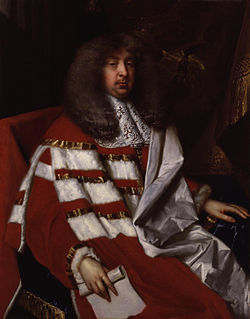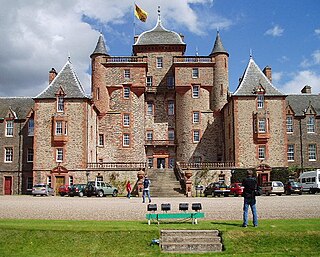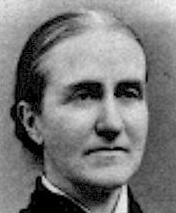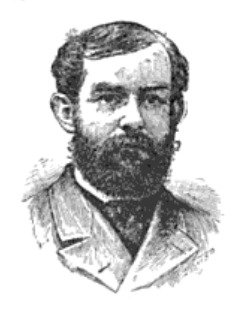This article needs additional citations for verification .(April 2021) |
The Sheriff of Lauderdale was historically the royal official responsible for enforcing law and order in Lauderdale, Scotland.
This article needs additional citations for verification .(April 2021) |
The Sheriff of Lauderdale was historically the royal official responsible for enforcing law and order in Lauderdale, Scotland.

John Maitland, 1st Duke and 2nd Earl of Lauderdale, 3rd Lord Maitland of Thirlestane KG PC, was a Scottish politician, and leader within the Cabal Ministry.

The former Royal Burgh of Lauder is a town in the Scottish Borders in the historic county of Berwickshire. On the Southern Upland Way, the burgh lies 27 miles (43 km) southeast of Edinburgh, on the western edge of the Lammermuir Hills.

Earl of Lauderdale is a title in the Peerage of Scotland. The current holder of the title is Ian Maitland, 18th Earl of Lauderdale.
Earl of Dundee is a title in the Peerage of Scotland. It was created in 1660 for John Scrymgeour, 3rd Viscount Dudhope. At his death in 1668, the Duke of Lauderdale declared that the first Earl had no heirs-male, and had the crown seize all of his lands. The earldom of Dundee became dormant and its holdings and offices were granted to Charles Maitland, 3rd Earl of Lauderdale, the Duke's younger brother. The title was revived in 1953, when it was determined that the first Earl did indeed have heirs-male, contrary to the assertion of the crown. The title was given to Henry James Scrymgeour-Wedderburn, who had previously served in the House of Commons and in the Cabinet.

Ettrick and Lauderdale was one of four local government districts in the Borders region of Scotland from 1975 to 1996.

Thirlestane Castle is a castle set in extensive parklands near Lauder in the Borders of Scotland. The site is aptly named Castle Hill, as it stands upon raised ground. However, the raised land is within Lauderdale, the valley of the Leader Water. The land has been in the ownership of the Maitland family since 1587, and Thirlestane served as the seat of the Earls of Lauderdale. The castle was substantially extended in the 1670s by the first and only Duke of Lauderdale. Further additions were made in the 19th century. The castle is now cared for by a charitable trust, and is open to the public.
James Cameron is a Canadian film director.

Tweeddale, Ettrick and Lauderdale was a constituency of the Scottish Parliament (Holyrood). It elected one Member of the Scottish Parliament (MSP) by the plurality method of election. Also, however, it was one of nine constituencies in the South of Scotland electoral region, which elected seven additional members, in addition to nine constituency MSPs, to produce a form of proportional representation for the region as a whole.

Sir William Bruce of Kinross, 1st Baronet, was a Scottish gentleman-architect, "the effective founder of classical architecture in Scotland," as Howard Colvin observes. As a key figure in introducing the Palladian style into Scotland, he has been compared to the pioneering English architects Inigo Jones and Christopher Wren, and to the contemporaneous introducers of French style in English domestic architecture, Hugh May and Sir Roger Pratt.

Clan Maitland is a Lowland Scottish clan.

Elizabeth Cecilia Douglas Clephane was a Scottish songwriter, who wrote the hymns "The Ninety and Nine" and "Beneath the Cross of Jesus".

Lauderdale is a long narrow geographical district in the Scottish Borders, Scotland, being the valley of the Leader Water,, above which rivulet St. Cuthbert had a vision of St. Aidan's soul being conducted to heaven. It is traversed from end to end by the A68 trunk road which runs from Darlington to Edinburgh.
Alasdair Caimbeul or Alexander Campbell of Carco was a Scottish noble and prelate. Coming from a branch of Clan Campbell in the allegiance of the Earl of Argyll, his career began in the 1560s still only a minor, serving the Earl of Argyll's interest. He was made Bishop of Brechin, and almost immediately alienated the majority of the bishopric's historical resources into the hands of the earl.

James Ogilvie Clephane was an American inventor, bar-admitted court reporter and venture capitalist in Washington, D.C. and New York City. He was involved in improving, promoting and supporting several inventions during the Gilded Age, including the typewriter, the graphophone, and the linotype machine. He has been called the "father of the linotype machine", and the development of mechanical typesetting, including the first typewriter was largely due to his initiative and investment.

Midlothian South, Tweeddale and Lauderdale is a constituency of the Scottish Parliament (Holyrood) covering parts of the council areas of Midlothian and Scottish Borders. Created for the 2011 election, it elects one Member of the Scottish Parliament (MSP) by the plurality method of election. It is one of nine constituencies in the South Scotland electoral region, which elects seven additional members, in addition to nine constituency MSPs, to produce a form of proportional representation for the region as a whole.
John Clephane, M.D., was a Scottish physician.
Clephane is a surname. Notable people with the surname include:
Kinross-shire was a county constituency of the House of Commons of Great Britain from 1708 until 1800, and of the House of Commons of the United Kingdom from 1801 to 1832.
The Sheriff of Fife was historically the office responsible for enforcing law and order in Fife, Scotland and bringing criminals to justice.
The Sheriff of the Lothians and Peebles was historically the office responsible for enforcing law and order and bringing criminals to justice in The Lothians and Peebles, Scotland. Prior to 1748 most sheriffdoms were held on a hereditary basis. From that date, following the Jacobite uprising of 1745, the hereditary sheriffs were replaced by salaried sheriff-deputes, qualified advocates who were members of the Scottish Bar.